
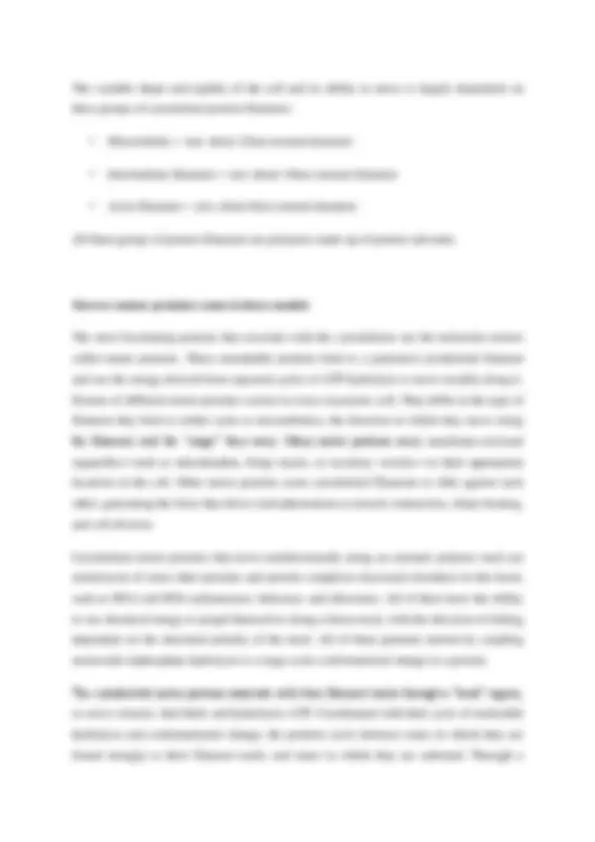
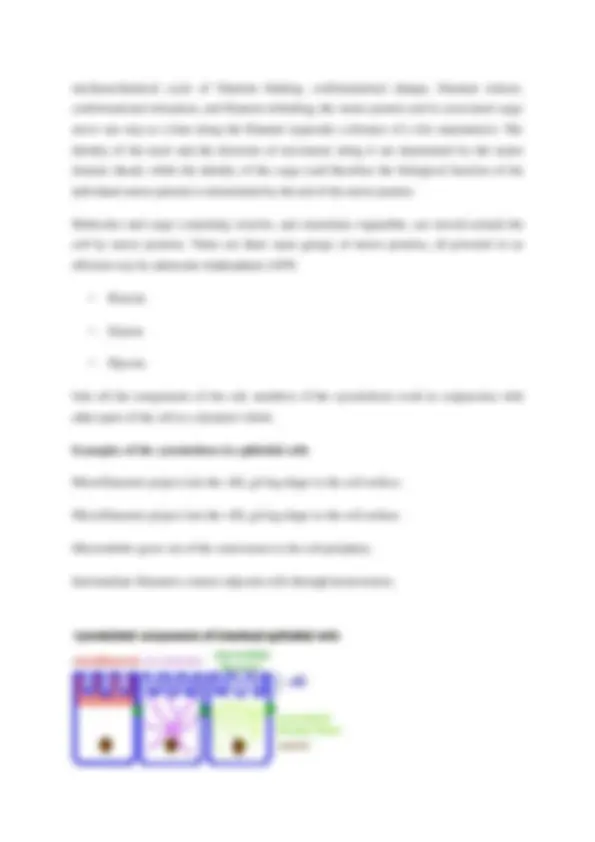
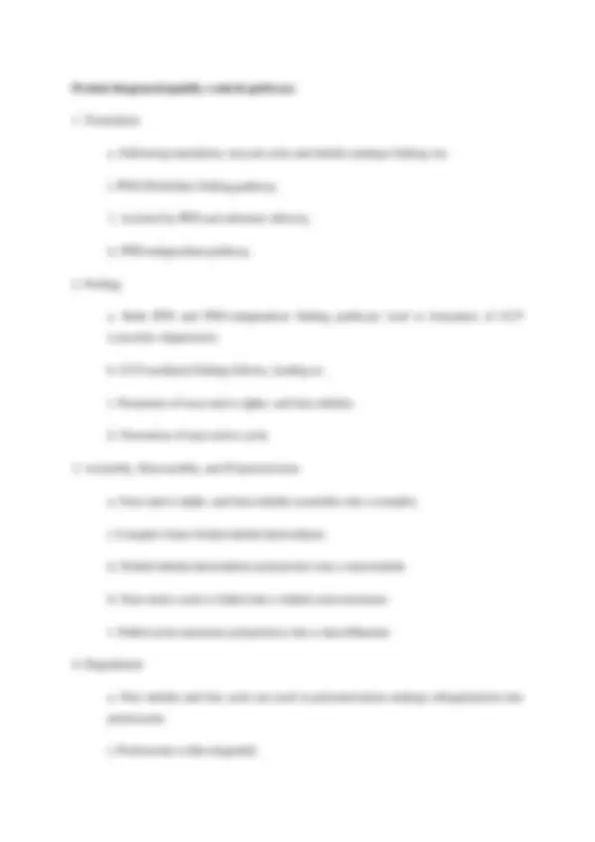
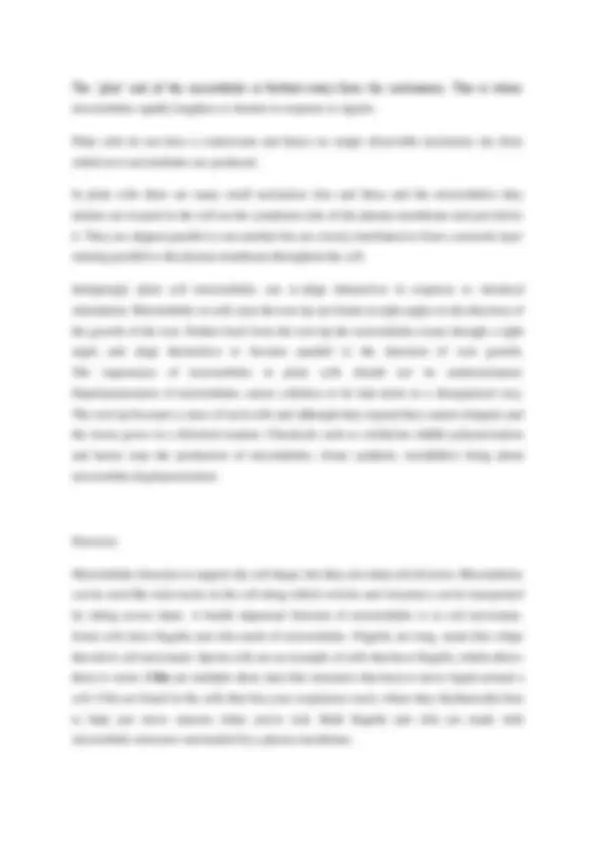
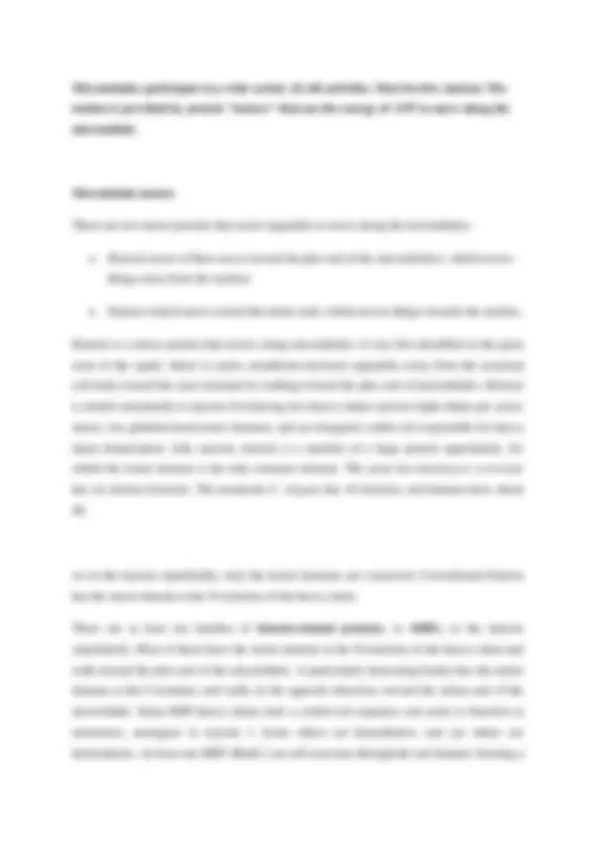
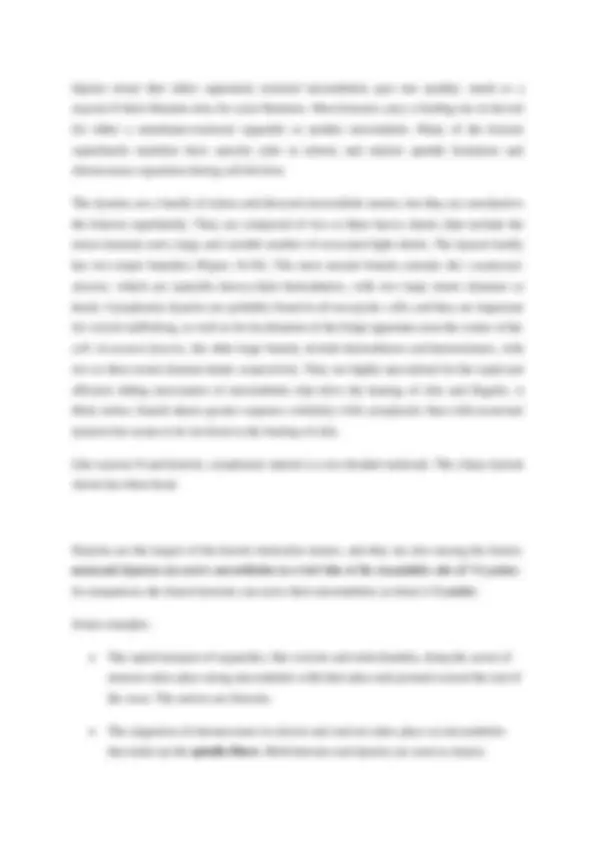
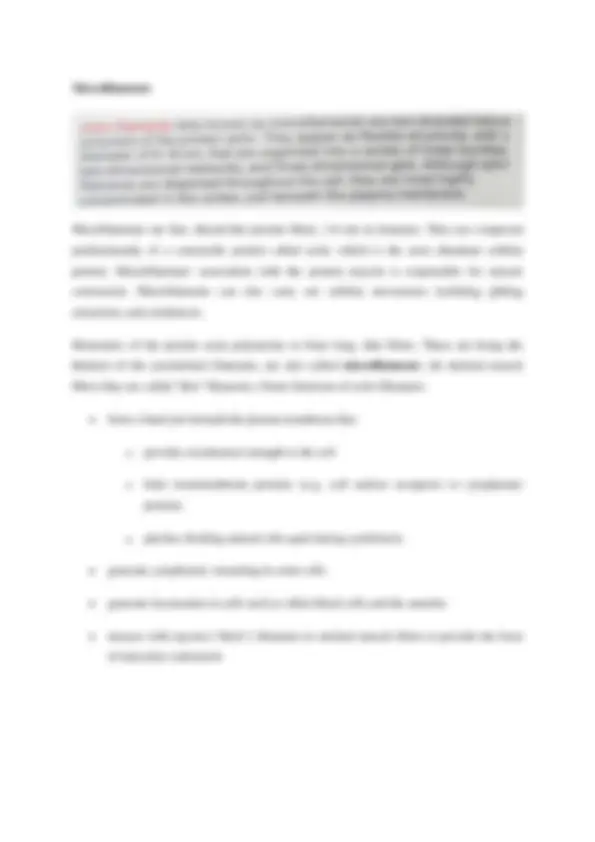
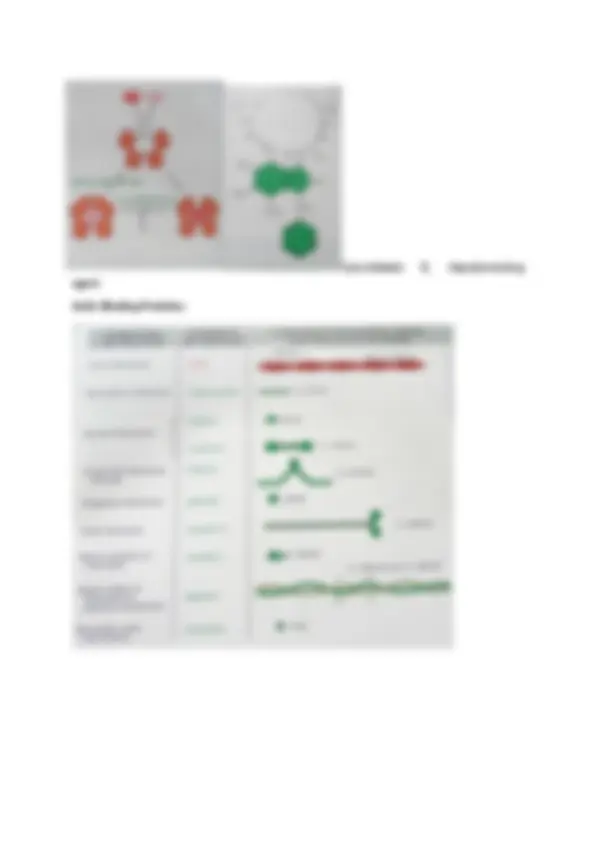
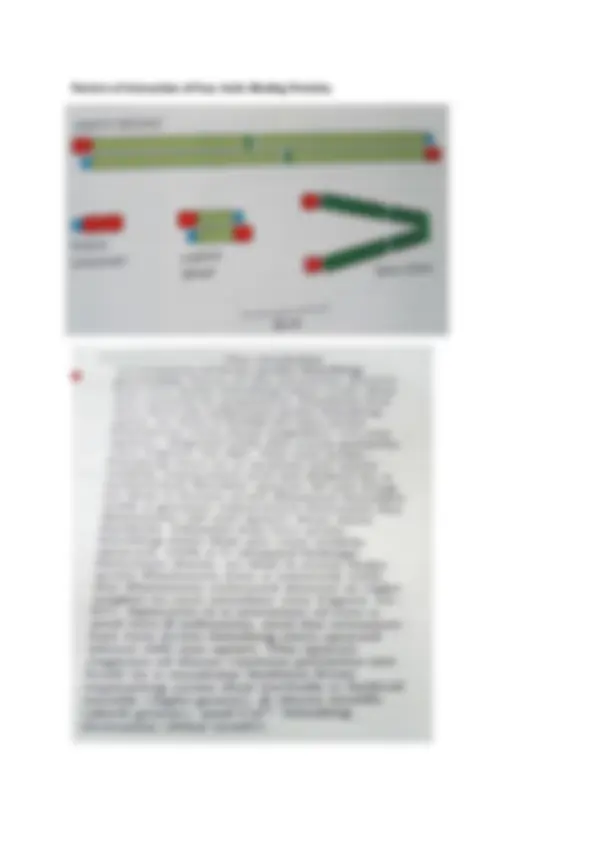
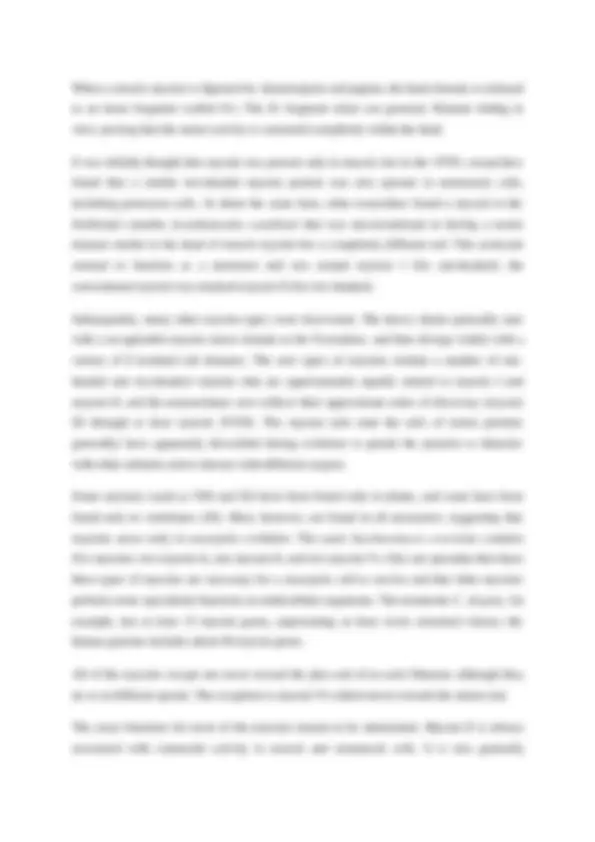


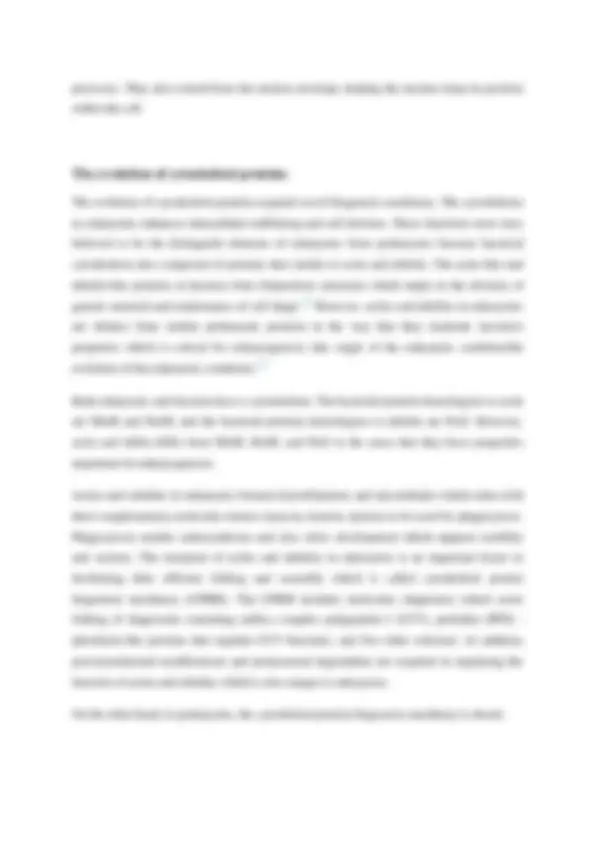
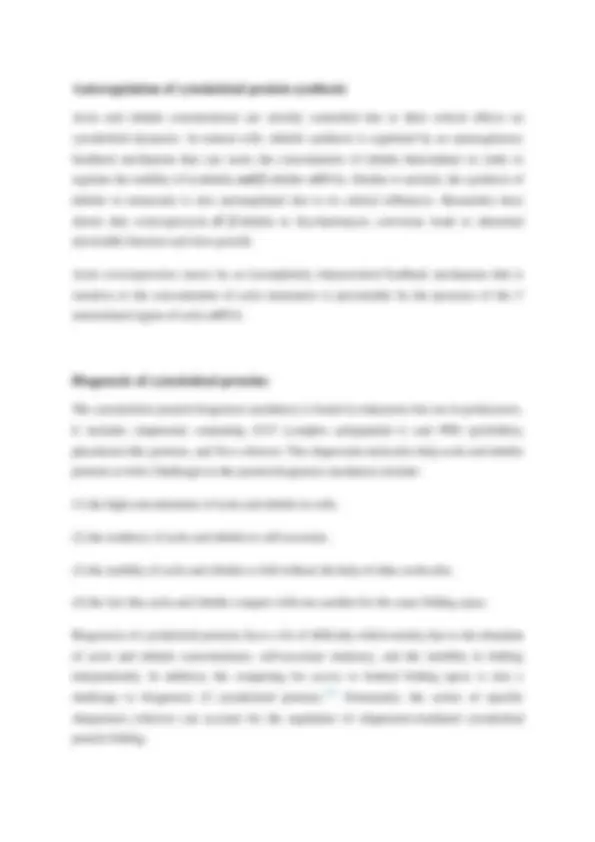
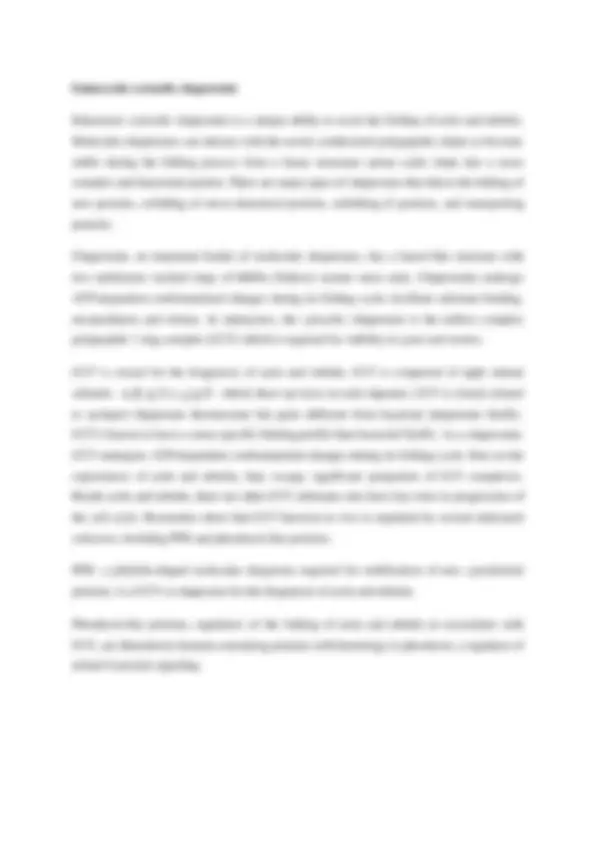
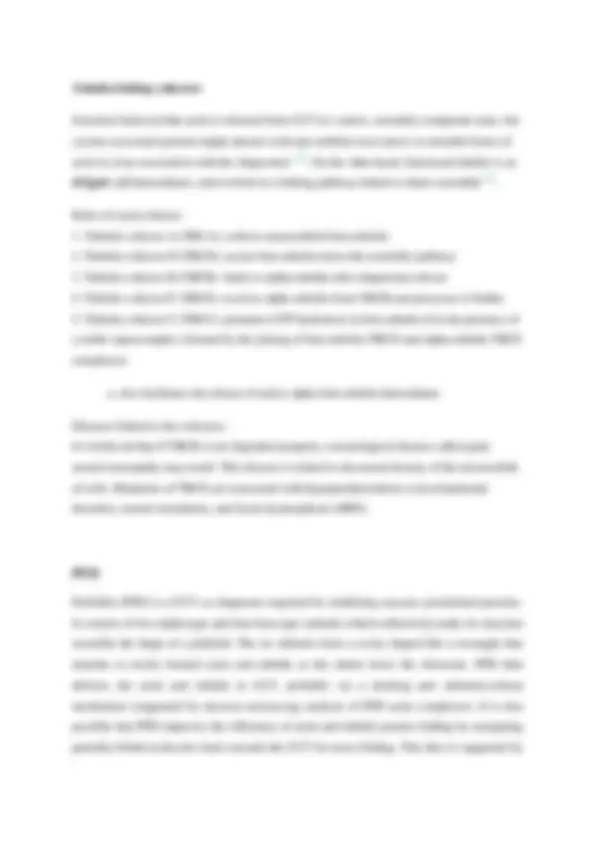
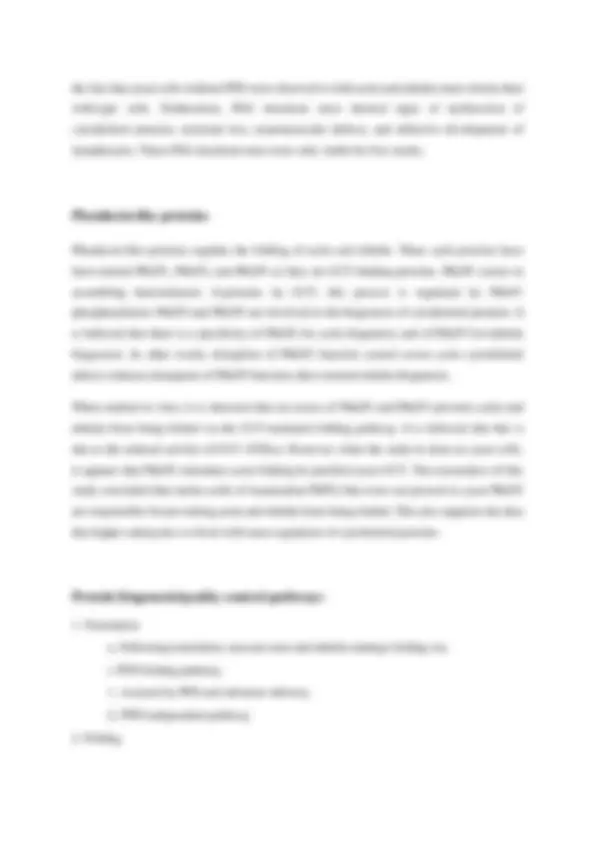
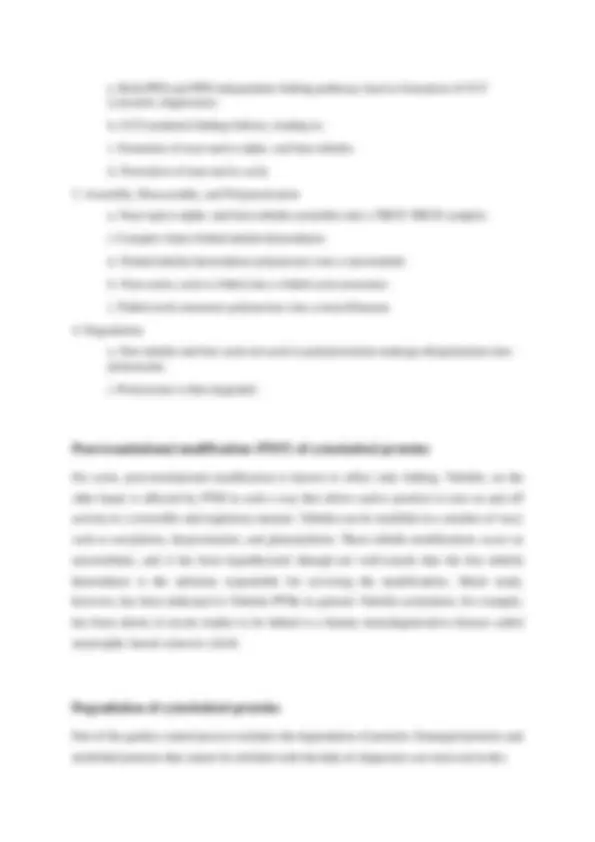
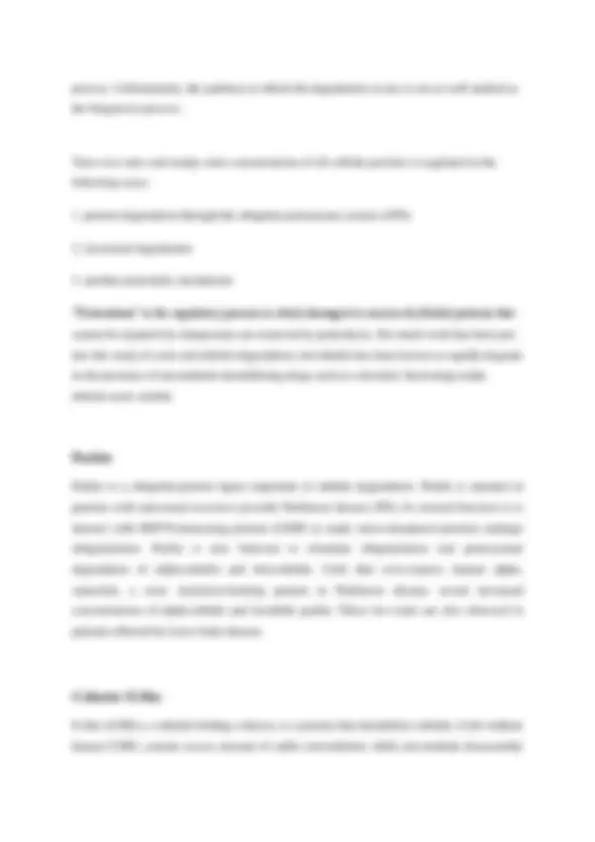
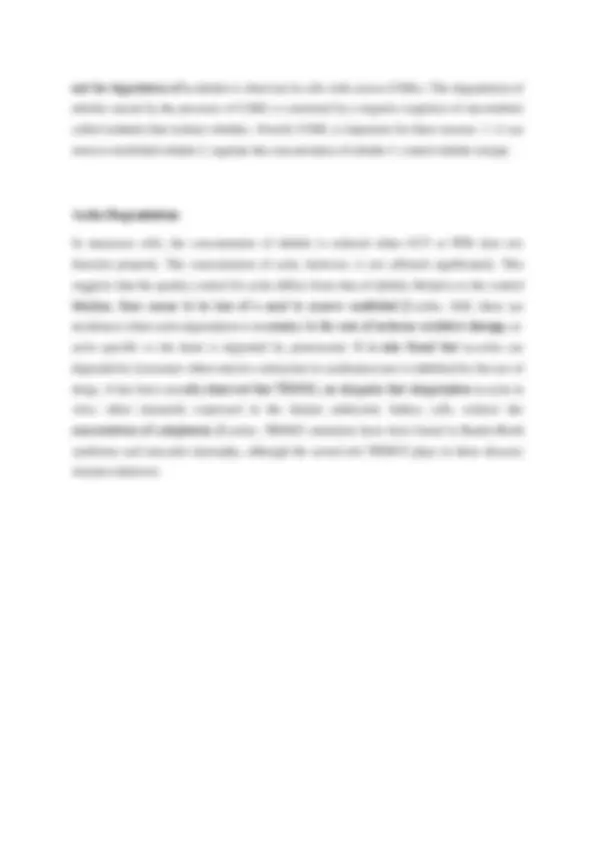


Study with the several resources on Docsity

Earn points by helping other students or get them with a premium plan


Prepare for your exams
Study with the several resources on Docsity

Earn points to download
Earn points by helping other students or get them with a premium plan
Community
Ask the community for help and clear up your study doubts
Discover the best universities in your country according to Docsity users
Free resources
Download our free guides on studying techniques, anxiety management strategies, and thesis advice from Docsity tutors
The cytoskeleton is unique to eukaryotic cells. It is a network of protein fibers supporting cell shape and anchoring organelles within the cell.
Typology: Summaries
1 / 28

This page cannot be seen from the preview
Don't miss anything!





















The cytoskeleton is unique to eukaryotic cells. It is a network of protein fibers supporting cell shape and anchoring organelles within the cell. The three main structural components of the cytoskeleton are microtubules (formed by tubulins), microfilaments (formed be actins) and intermediate filaments. All three components interact with each other non-covalently.It is a dynamic three-dimensional structure that fills the cytoplasm. This structure acts as both muscle and skeleton, for movement and stability. The long fibers of the cytoskeleton are polymers of subunits.
Cytoskeleton functions to:
establishing cell shape
providing mechanical strength
locomotion
chromosome separation in mitosis and meiosis
intracellular transport of organelles
A cytoskeleton can provide support and shape for a cell like skeleton supports and shapes body. In a cell, a cytoskeleton can anchor a cell in one place or allow a cell to move. The parts of cells' cytoskeletons can also help structures move independently within cells. A cytoskeleton can position cell structures in specific places within the cell, or it can move cell structures from one end of the cell to the other.
A cell's cytoskeleton is comprised of three different types of fibers: microtubules, intermediate filaments, and microfilaments.
The cytoskeleton is the overall name given to protein filaments and motor proteins (also called molecular motors) in the cell. These protein filaments form an enormous three dimensional (3D) meshwork. Filaments can be cross linked to other similar filaments, and to
membranes, by means of accessory proteins. This inter-linking greatly increases rigidity. Some filaments are used s trackways for motor proteins to transport cargoes.
All cells, except those of most bacteria, contain components of the cytoskeleton.
They help the cell remain rigid but also help it move and change its shape when instructed to do so.
Components of the cytoskeleton also enable cilia, flagella and sperm to move, cell organelles to be moved and positioned, and muscles to function.
During cell division these components also assist by pulling the daughter chromosomes to opposite ‗poles‘ in the dividing process.
Throughout the life of the cell various molecules and cargo containing vesicles are transported around the cell by motor proteins.
These move along the protein filaments using them as trackways rather like a railway locomotive runs on rail tracks.
In the early evolution of eukaryote cells the compartmentalisation of cell functions into membrane bounded structures, was accompanied by the evolution of a system that positioned and anchored them.
Mover - Shaper Concept in Cell
Shapers (protein filaments) come in three sizes
mechanochemical cycle of filament binding, conformational change, filament release, conformational relaxation, and filament rebinding, the motor protein and its associated cargo move one step at a time along the filament (typically a distance of a few nanometers). The identity of the track and the direction of movement along it are determined by the motor domain (head), while the identity of the cargo (and therefore the biological function of the individual motor protein) is determined by the tail of the motor protein.
Molecules and cargo containing vesicles, and sometimes organelles, are moved around the cell by motor proteins. There are three main groups of motor proteins, all powered in an efficient way by adenosine triphosphate (ATP)
Like all the components of the cell, members of the cytoskeleton work in conjunction with other parts of the cell as a dynamic whole.
Examples of the cytoskeleton in epithelial cells
Microfilaments project into the villi, giving shape to the cell surface.
Microfilaments project into the villi, giving shape to the cell surface.
Microtubules grow out of the centrosome to the cell periphery.
Intermediate filaments connect adjacent cells through desmosomes.
Protein biogenesis/quality control pathways
a. Following translation, nascent actin and tubulin undergo folding via:
i. PFD (Prefoldin) folding pathway.
ii. PFD-independent pathway.
a. Both PFD and PFD-independent folding pathways lead to formation of CCT (cytosolic chaperonin).
b. CCT-mediated folding follows, leading to:
i. Formation of near-native alpha- and beta-tubulin.
ii. Formation of near-native actin.
a. Near-native alpha- and beta-tubulin assembles into a complex.
i. Complex forms folded tubulin heterodimer.
ii. Folded tubulin heterodimer polymerizes into a microtubule.
b. Near-native actin is folded into a folded actin monomer.
i. Folded actin monomer polymerizes into a microfilament.
a. Free tubulin and free actin not used in polymerization undergo ubiquitylation into proteasome.
i. Proteasome is then degraded.
Microtubules are very unstable and can disassemble very quickly. On first thoughts this would appear to be very inefficient but during mitosis and in circumstances that demand a rapid change of cell shape, quick disassembly and assembly are useful assets. This process is called ‗dynamic instability‘ and is mainly directed and controlled by the chemical guanosine 5‘ triphosphate (GTP).
Microtubules
grow at the plus end by the polymerization of tubulin dimers (powered by the hydrolysis of GTP), and
shrink by the release of tubulin dimers (depolymerization) at the same end.
Most microtubules are attached to, and initially arise from, an organising centre (MTOC); in animal cells this is generally the centrosome. When cells divide the centrosome also divides. Microtubules are attached to the centrosome at their ‗minus‘ end, the end that is slowest growing. Centrosomes often lie close to the cell nucleus and microtubules radiate from here in all directions towards the edge of the cell (plasma membrane).
The ‗plus‘ end of the microtubule is furthest away from the centrosome. This is where microtubules rapidly lengthen or shorten in response to signals.
Plant cells do not have a centrosome and hence no single observable nucleation site from which new microtubules are produced.
In plant cells there are many small nucleation sites and these and the microtubules they initiate are located in the cell on the cytoplasm side of the plasma membrane and just below it. They are aligned parallel to one another but are closely interlinked to form a network layer running parallel to the plasma membrane throughout the cell.
Intriguingly plant cell microtubules can re-align themselves in response to chemical stimulation. Microtubules in cells near the root tip are found at right angles to the direction of the growth of the root. Further back from the root tip the microtubules rotate through a right angle and align themselves to become parallel to the direction of root growth. The importance of microtubules in plant cells should not be underestimated. Depolymerisation of microtubules causes cellulose to be laid down in a disorganised way. The root tip becomes a mass of such cells and although they expand they cannot elongate and the tissue grows in a distorted manner. Chemicals such as colchicine inhibit polymerisation and hence stop the production of microtubules. Some synthetic weedkillers bring about microtubule depolymerisation.
Function:
Microtubules function to support the cell shape, but they also help cell division. Microtubules can be used like train tracks in the cell along which vesicles and structures can be transported by riding across them. A fourth important function of microtubules is in cell movement. Some cells have flagella and cilia made of microtubules. Flagella are long, snake-like whips that drive cell movement. Sperm cells are an example of cells that have flagella, which allows them to swim. Cilia are multiple short, hair-like structures that beat to move liquid around a cell. Cilia are found in the cells that line your respiratory track, where they rhythmically beat to help you move mucous when you're sick. Both flagella and cilia are made with microtubule structures surrounded by a plasma membrane.
bipolar motor that slides oppositely oriented microtubules past one another, much as a myosin II thick filament does for actin filaments. Most kinesins carry a binding site in the tail for either a membrane-enclosed organelle or another microtubule. Many of the kinesin superfamily members have specific roles in mitotic and meiotic spindle formation and chromosome separation during cell division.
The dyneins are a family of minus-end-directed microtubule motors, but they are unrelated to the kinesin superfamily. They are composed of two or three heavy chains (that include the motor domain) and a large and variable number of associated light chains. The dynein family has two major branches (Figure 16-56). The most ancient branch contains the cytoplasmic dyneins, which are typically heavy-chain homodimers, with two large motor domains as heads. Cytoplasmic dyneins are probably found in all eucaryotic cells, and they are important for vesicle trafficking, as well as for localization of the Golgi apparatus near the center of the cell. Axonemal dyneins, the other large branch, include heterodimers and heterotrimers, with two or three motor-domain heads, respectively. They are highly specialized for the rapid and efficient sliding movements of microtubules that drive the beating of cilia and flagella. A third, minor, branch shares greater sequence similarity with cytoplasmic than with axonemal dyneins but seems to be involved in the beating of cilia.
Like myosin II and kinesin, cytoplasmic dynein is a two-headed molecule. The ciliary dynein shown has three head.
Dyneins are the largest of the known molecular motors, and they are also among the fastest: axonemal dyneins can move microtubules in a test tube at the remarkable rate of 14 μm/sec. In comparison, the fastest kinesins can move their microtubules at about 2–3 μm/sec.
Some examples:
The rapid transport of organelles, like vesicles and mitochondria, along the axons of neurons takes place along microtubules with their plus ends pointed toward the end of the axon. The motors are kinesins.
The migration of chromosomes in mitosis and meiosis takes place on microtubules that make up the spindle fibers. Both kinesins and dyneins are used as motors.
o Vincristine , a drug found in the Madagascar periwinkle (a wildflower), binds to tubulin dimers preventing the assembly of microtubules. This halts cells in metaphase of mitosis.
o Taxol® , a drug found in the bark of the Pacific yew, prevents depolymerization of the microtubules of the spindle fiber. This, in turn, stops chromosome movement, and thus prevents the completion of mitosis.
Because the hallmark of cancer cells is uncontrolled mitosis, both vincristine and Taxol are used as anticancer drugs
Microfilaments
Microfilaments are fine, thread-like protein fibers, 3-6 nm in diameter. They are composed predominantly of a contractile protein called actin, which is the most abundant cellular protein. Microfilaments' association with the protein myosin is responsible for muscle contraction. Microfilaments can also carry out cellular movements including gliding cntraction, and cytokinesis.
Monomers of the protein actin polymerize to form long, thin fibers. These are being the thinnest of the cytoskeletal filaments, are also called microfilaments. (In skeletal muscle fibers they are called "thin" filaments.) Some functions of actin filaments:
form a band just beneath the plasma membrane that
o provides mechanical strength to the cell
o links transmembrane proteins (e.g., cell surface receptors) to cytoplasmic proteins
o pinches dividing animal cells apart during cytokinesis
generate cytoplasmic streaming in some cells
generate locomotion in cells such as white blood cells and the amoeba
interact with myosin ("thick") filaments in skeletal muscle fibers to provide the force of muscular contraction
Cytochalasin B, depolymerizing agent
Actin Binding Proteins:
Actin based motor proteins
Actin-based Motor Proteins Are Members of the Myosin Superfamily
The first motor protein identified was skeletal muscle myosin , which is responsible for generating the force for muscle contraction. This myosin, called myosin II is an elongated protein that is formed from two heavy chains and two copies of each of two light chains. Each of the heavy chains has a globular head domain at its N-terminus that contains the force-generating machinery, followed by a very long amino acid sequence that forms an extended coiled-coil that mediates heavy chain dimerization. The two light chains bind close to the N-terminal head domain, while the long coiled-coil tail bundles itself with the tails of other myosin molecules. These tail-tail interactions result in the formation of large bipolar ―thick filaments‖ that have several hundred myosin heads, oriented in opposite directions at the two ends of the thick filament.
Each myosin head binds and hydrolyses ATP, using the energy of ATP hydrolysis to walk toward the plus end of an actin filament. The opposing orientation of the heads in the thick filament makes the filament efficient at sliding pairs of oppositely oriented actin filaments past each other. In skeletal muscle, in which carefully arranged actin filaments are aligned in ―thin filament‖ arrays surrounding the myosin thick filaments, the ATP-driven sliding of actin filaments results in muscle contraction. Cardiac and smooth muscle contain myosins that are similarly arranged, although they are encoded by different genes.
required for cytokinesis, the pinching apart of a dividing cell into two daughters, as well as for the forward translocation of the body of a cell during cell migration. The myosin I proteins contain a second actin-binding site or a membrane-binding site in their tails, and they are generally involved in intracellular organization and the protrusion of actin-rich structures at the cell surface. Myosin V is involved in vesicle and organelle transport. Myosin VII is found in the inner ear in vertebrates, and certain mutations in the gene coding for myosin VII cause deafness in mice and humans.
Intermediate filaments
Intermediate filaments have a diverse role in structure and support within the cell. One specialized group of intermediate filaments has an important role in the nucleus, where they can make up the nuclear lamina. Here they are essentially the cytoskeleton of the nucleus, specifically supporting a structure of your cells like the bones supporting your hands. Here, intermediate filaments provide support to the nuclear lamina and aid in regulating nuclear